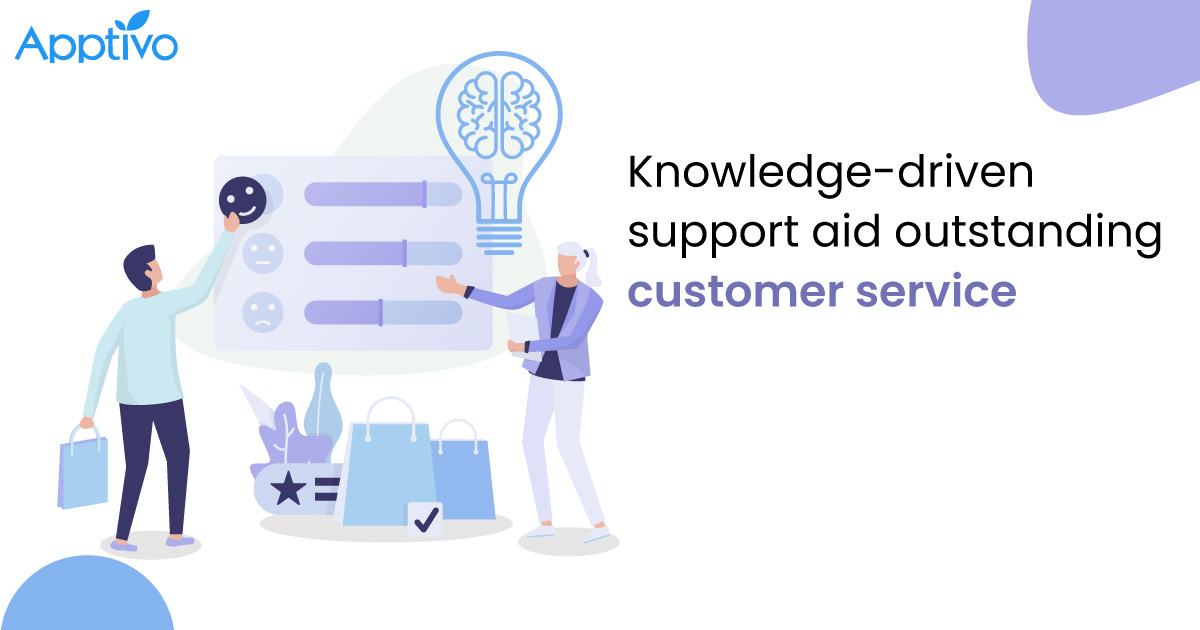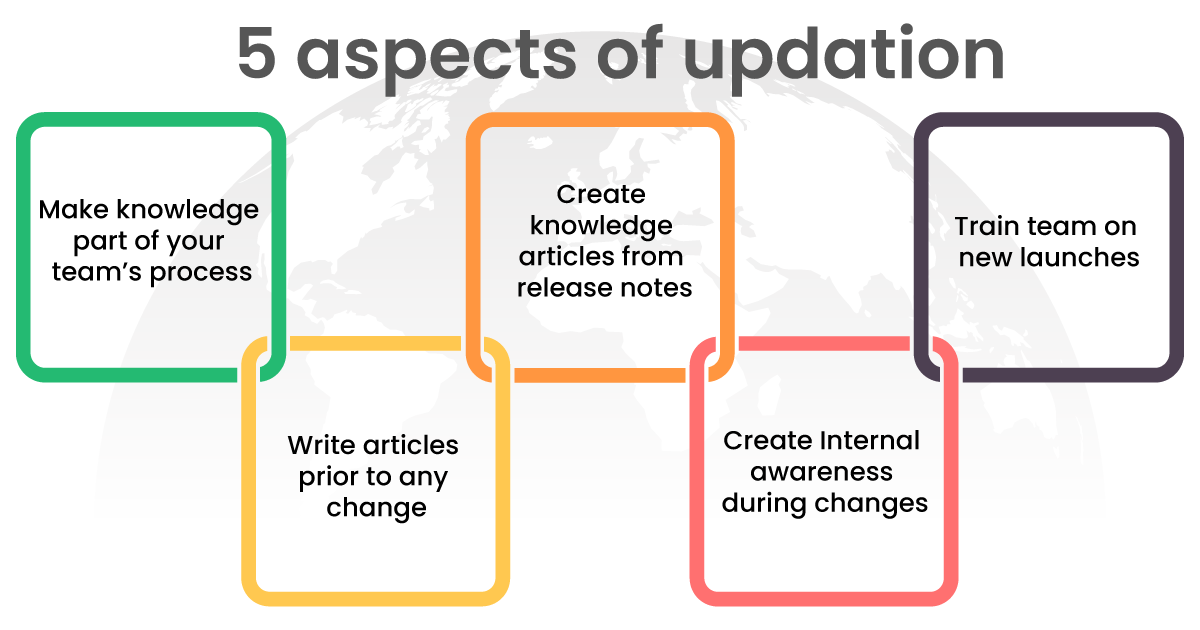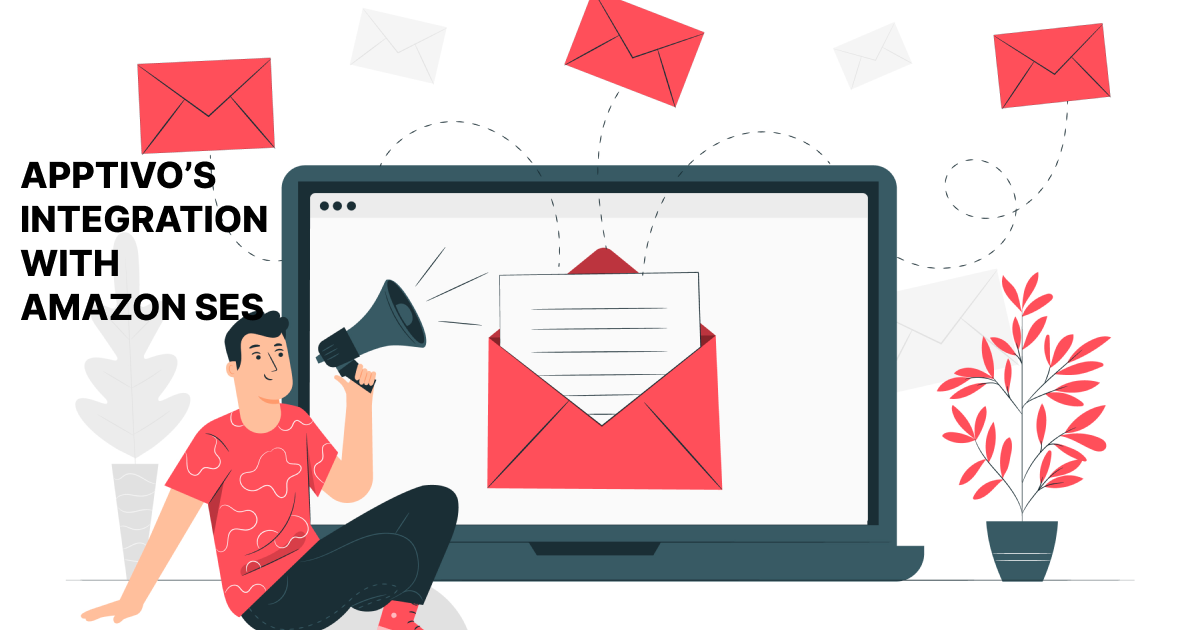 |
“Can you please hold… while I check up on that information?” – Dreaded words to hear as a customer when contacting support. The longer the wait, the more frustrated the customer gets and even if the support executive solves that particular problem, the trust with the customer is likely to have been eroded. Consumer behaviorists have looked at this problem and have defined it as, “You are the Expert” expectation that customers have when approaching support. Researchers have likened a support call if the customer is visiting a hospital and expect the same level of expertise as that of a doctor and a nurse. It is only logical for the customer to consider a support executive as an expert.
The challenge is that it is neither worthwhile nor practical for an expert to attend to phone calls and answer customer queries. As businesses grow & evolve more departments are created and more people are recruited to perform specialized functions, there is bound to be a fragmentation of information and many times, it becomes a challenge to find out who has that vital piece of information that would solve a particular customer problem.
Support executives have to arm themselves with knowledge at their fingertips about every product and service, their pricing, all policies with regard to service, warranty and all probable faults that can be serviced, etc. This is an unrealistic amount of information that a support executive has to retain. Hence, evolved the knowledge management system as a key component of the Help Desk software.
With the proper categorization of the knowledge and cross-referencing, the support desk can deliver ‘expert level’ guidance and support to the customer.
Centralize your knowledge
The very purpose of a knowledge management system is to ensure transparency across the organization. As business evolves, knowledge will exist in fragmented places. Information could be as emails, documents on individual systems, spreadsheets of support executives, and even in the brains of individual service desk agents – where the more experienced of them have a treasure trove of information.
Using a knowledge management system, aggregation of this fragmented information into a central repository is key for its success. Centralizing all that content and organizing them in a semantically searchable database accelerates learning and helps teams make better decisions. When one person holds knowledge about a particular product, service, process, or system, have them document it. When customers are commenting about a service, update documents with that feedback. When repeated common tickets occur around a similar query, create an article about the query or a FAQ question answer that enables customers to navigate to them automatically.
Put simply, having a knowledge base to work from helps agents respond to and resolve issues faster.
Keep it updated
The toughest part of the knowledge base is creating one. However, it is equally challenging to keep it updated with the latest information and for that purpose, updating the knowledge base has been made part of the SOPs of relevant departments. Assign owners to various Topics, Sections, Information, Guides, etc. and make it their responsibility to keep that information updated. This is even more challenging than creating a knowledge base. Because everyone is constantly preoccupied with their own KPIs and focused on delivering them, updating the knowledge base sometimes gets relegated to documentation-level priority and fails to be updated.
But once the organization understands that the key to customer support satisfaction is knowledge-driven support, with a greater priority given to the same, it becomes an effective tool for the help desk. By shifting the focus from the individual to the team and creating a culture of collaboration the organization moves to be perceived as more professional and having experts in support.
Aspects of Updation
 |
There are five aspects of updation:
1. Make knowledge part of your team’s process
2. Write articles before changes are implemented
3. When a new service is transitioned into production, use that documentation to update the knowledge base
4. Ensure internal awareness is created during changes to prevent incidents
5. Support Training on new product/service features
Allow customers and agents to give feedback
Go to any support page on Google and at the bottom you would find – do you find this information useful with a thumbs up and thumbs down sign. A simple binary choice is given to customers on the relevance, content, language, and comprehensiveness of the Support article. Feedback is your friend and will help you gauge the utility of the content. Do not shy away from negative feedback, but embrace them and make changes to the related content, add relevance, context, helpful images, etc.
Make it semantically friendly
A well-organized, semantically searchable knowledge base helps not only agents but also customers. Two third of the customers will try to solve the problem by themselves first and will look for relevant information on your site or any other means of resolving it. As your knowledge base becomes more extensive and addresses the most common problems, it will help customers be self-sufficient and reduce support tickets created for mundane requests.
Many support FAQs and blogs rank higher than marketing sites because it fulfills the basic function of satisfying human curiosity and the way semantically people search for answers. Beware, if the business fails to provide that information directly to the customers, there is every likelihood that the customer may be misled and even end up going to the competitor.
Write right
Knowledge base articles, FAQs, Wikis, setup guides etc., need to be concise, precise, and easy to read and follow. Ensure the language is understood by the customer. Avoid jargon and terminology, at the same time avoid writing pedantically. Use simple crisp active voice sentences that will enable customers to understand concepts and what steps to take to solve whatever problem they may be facing.
Analyze for insights
Analyze the performance of each page of the knowledge base to great insights into the product, service, and customer experience. These insights can be used to innovate or improvise, restructure, reorganize, reprioritize any changes for the future.
Without the knowledge management system, customer insights are often costly, cumbersome, and often even misleading. However, by analyzing traffic and the utility of the knowledge base, we can get an immense amount of insight into what works for the customer.
Summary
No wonder, enterprises always insist on documentation. Documentation is the lifeline of an enterprise and helps in keeping the teams aligned with knowledge. Knowledge Driven Support is the key to providing exceptional Customer Service.
Latest Blogs

Apptivo's Integration with Amazon SES for Outgoing Email Server
Amazon Simple Email Service (SES) is an email platform that provides an easy, cost-effective way to send and receive email using your email addresses and domains. Apptivo has migrated its email service to Amazon SES (Simple Email Service) to enhance the performance and reliability of our email services
Read more →
EXPLORING MULTI CHANNEL CUSTOMER SUPPORT SOFTWARE
1.What is customer service software? 2
Read more →
Maximize your business performance with seamless CRM Integration
1.What is CRM Integration? 2
Read more →
